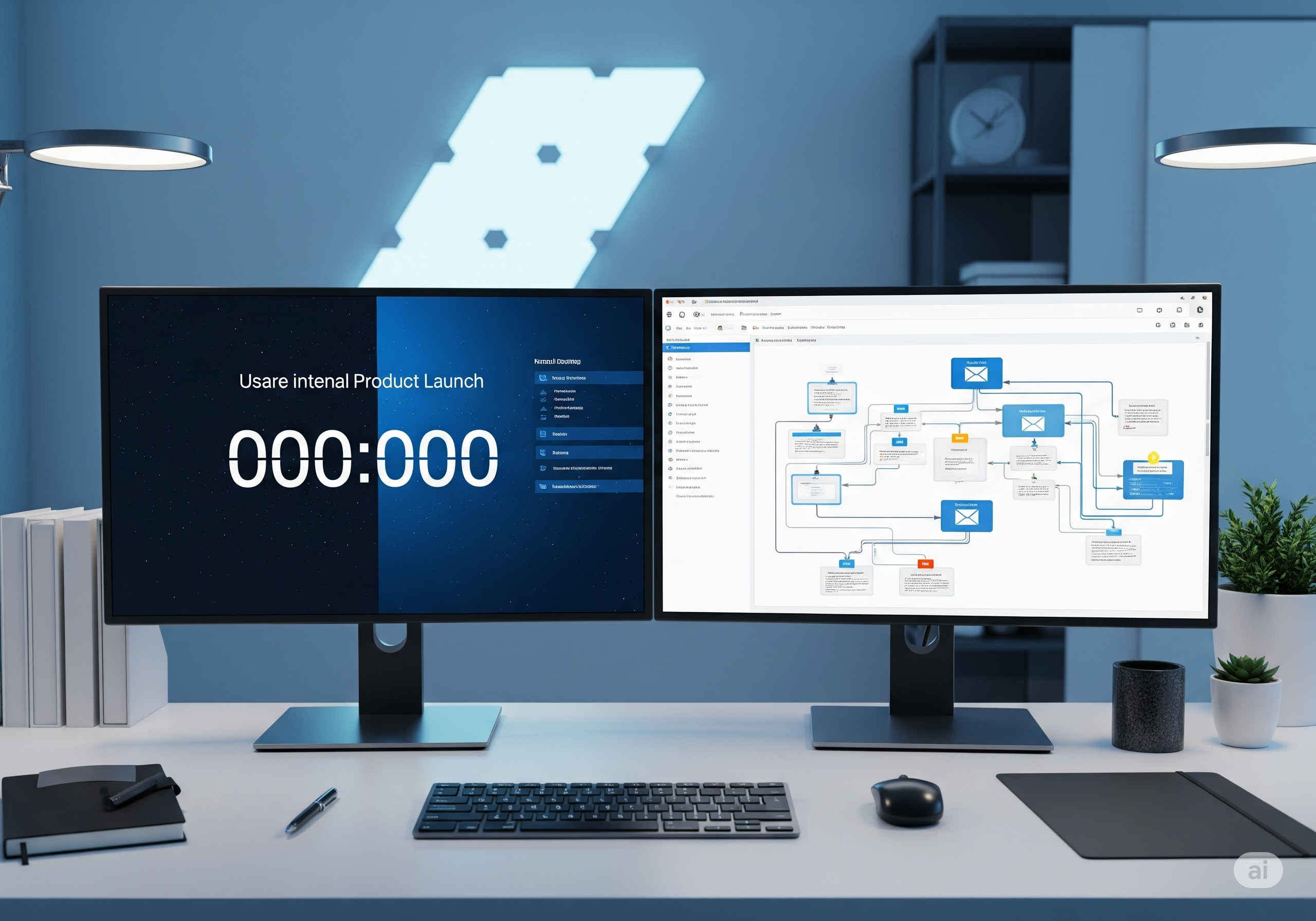When building a digital course through co-production, one of the most strategic questions you’ll face is: Should we go for an internal launch or build an evergreen funnel?
Both paths have their merits. One creates urgency and community buzz. The other builds long-term, automated income. Choosing the right model — or the right moment to use each — is key to maximizing results and aligning expectations with your expert partner.
In this article, we’ll break down the pros, cons, and best use cases for both internal and evergreen strategies, helping you decide when, why, and how to use each one in your co-productions.
What Is an Internal Launch?
An internal launch refers to a time-limited enrollment period promoted to your existing audience — email subscribers, followers, warm leads — rather than running external ads to strangers.
It typically includes:
- A short launch window (5–10 days)
- A build-up of content and engagement
- Scarcity and urgency (“doors close Friday”)
- Email sequences, webinars, or live events
- A post-launch close with no immediate reentry
Advantages of Internal Launches
- Immediate Cash Flow
Internal launches can generate significant revenue in a short period, which is helpful for covering expenses or reinvesting quickly. - High Engagement
The time-limited nature encourages excitement, interaction, and commitment. - Market Feedback
You receive real-time feedback about pricing, messaging, objections, and offer clarity — fast. - Community Building
Students enroll together and often move through the course at the same time, building peer motivation and momentum. - Ideal for New Courses
It’s easier to test and improve a course when you know exactly who’s coming and when.
Disadvantages of Internal Launches
- High Pressure
Launches can be exhausting — emotionally and logistically. You may need to work long hours over a few intense weeks. - Revenue Gaps
After the launch ends, there’s often a long quiet period with no income unless you offer other products. - Limited Access
Potential students who discover you post-launch must wait months before they can buy. - Requires an Engaged List
Without a warm audience, internal launches flop. Paid ads usually don’t perform well for internal-only launches.
What Is an Evergreen Launch?
An evergreen launch is a permanent, automated enrollment funnel. It allows new students to purchase and begin the course at any time, often using email sequences and urgency tools to simulate the launch experience.
It typically includes:
- An automated welcome sequence
- Scarcity (countdown timers, expiring bonuses)
- A standalone sales page
- Long-term ads or content for traffic
Advantages of Evergreen Launches
- Ongoing Revenue
Evergreen funnels generate income 24/7. No need to wait for “launch week.” - Lower Pressure
There’s no need for big event production or emotional build-up. It runs in the background. - More Accessible for Students
Anyone can join when they’re ready — no waiting months. - Scalable With Ads
Evergreen funnels allow you to turn paid traffic into consistent student enrollments. - Ideal for Mature Courses
Courses that are proven and refined do very well in an evergreen environment.
Disadvantages of Evergreen Launches
- Takes Time to Optimize
Evergreen funnels often perform poorly at first. You’ll need to test emails, pages, and traffic sources. - Lack of Social Proof Buzz
Without cohorts or live events, there’s less excitement around the course. - Potentially Lower Conversion Rates
Urgency feels less real in automated systems unless handled carefully. - Requires Strong Tech Systems
You’ll need email automation, timers, funnel builders, and analytics tools — all working seamlessly.
Which Strategy Is Best for Your Co-Production?
Let’s break it down by scenario:
- Brand-New Course?
✅ Go with an internal launch first. It gives you fast feedback and doesn’t require perfect automation. - Small or Warm Audience?
✅ Internal is still better — your goal is connection, not mass scale yet. - Expert is a Thought Leader With a Big List?
✅ Use a well-timed internal launch to create buzz and urgency. - Course Has Been Launched 1–3 Times Already?
✅ Start transitioning to an evergreen model using proven content and feedback. - Looking to Build a Scalable Asset Over Time?
✅ Evergreen is ideal for long-term income and time leverage. - Hybrid Model:
The smartest co-producers often combine both. For example:- 2 internal launches per year (spring and fall)
- Evergreen funnel running in the background year-round
- Live cohorts during internal, self-paced for evergreen
This hybrid strategy keeps cash flowing and your audience engaged without launch fatigue.
When to Transition from Internal to Evergreen
Here’s a quick readiness checklist:
- ✅ The course has consistent student results
- ✅ You’ve refined the offer through at least one live launch
- ✅ You have a validated email sequence and lead magnet
- ✅ Sales page is converting well
- ✅ You’re ready to invest time in ads or SEO content
If you check all five, it’s time to move toward evergreen.
What Co-Producers Should Do in Each Model
| Role | Internal Launch | Evergreen |
|---|---|---|
| Email Sequences | Write, test in real time | Automate and optimize |
| Platform Setup | Time-specific cohort | Self-paced, always open |
| Support | More concentrated | Spread out over time |
| Traffic | Live events, list-based | Ads, SEO, evergreen content |
| Metrics | Launch ROI, live conversion | Cost per lead, long-term LTV |
Understanding these dynamics allows co-producers to better allocate resources and set expectations with the expert.
Conclusion
There’s no one-size-fits-all answer when it comes to internal vs. evergreen launches. Each has its place. Internal creates excitement and feedback. Evergreen creates freedom and scale.
The real strategy? Use both over time. Co-producers who understand the rhythm of launches and automation create more sustainable, scalable education businesses — for themselves and for the experts they support.
Choose the path based on where you are, not where you want to be. Start small, stay focused, and evolve your strategy with each iteration.
Tags

